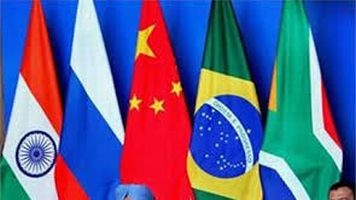The eighth BRICS Summit, taking place in Goa in India on 16th October 2016 and attended by the five members of the group namely India, China, Brazil, Russia and South Africa has aroused considerable curiosity around the world. The curiosity is mainly about whether the BRICS summit would aid in easing the tension in the relationship between India and China due to various issues or whether it would at least help in concealing the differences between both the countries.
Positive steps in building relationships:
Ever since Mr. Narendra Modi became the Prime Minister of India around two years back, there has been a frequent exchange of high-level visits between the leaders of India and China.
Over the last few years, China and India have been successfully cooperating in IT, infrastructure, e-commerce and industrial production. A large number of Indian students are studying in China, mostly in medical schools. The number of tourists to each other country has significantly increased over the past few years, especially after India granted e-visas for Chinese tourists.
With Prime Minister Modi and Chinese President Xi Jinping giving an impression that they have developed feelings of comradery between each other, the optimists seem to think that differences in China and India can be overcome.
Relationship face overhang from disputes:
In spite of the above positive developments, the ground reality is that the relationship between India and China face an overhang from several issues such as ongoing border disputes.
It has to be recognized that there are numerous differences between China and India. Apart from border disputes, the two countries also differ over some international and regional issues, which could hamper and even disrupt smooth development of bilateral relations.
China’s hard and uncompromising stand on issues:
In spite of the initiatives between both the countries to foster economic and industrial cooperation, the fact is that China has not diluted or given up any of its policies or claims that cause discomfort in India.
Apart from the fact that China still occupies a large territory that it gained after 1962 war, which India calls as China occupied territory and considers China as an aggressor as far as this border issue is concerned, China has made claims that Arunachal Pradesh in India is part of China. There have been reports of Chinese soldiers entering into Indian Territory for a brief period and China constructing roads and other infrastructure in the disputed territory.
The recent move of China to build a dam across Brahmaputra River has the potential to create tremendous tension between India and China, as the construction of the dam would curtail the water availability for some states in north-east India. China’s reported plan to divert the Brahmaputra from its upper reaches is being seen as a direct affront to India and a violation of International norms of sharing river waters. Once the construction of a dam is complete, the control on the water of Brahmaputra will be in the hands of China. As the Brahmaputra is the lifeline of North East India, the life, and environment in the region will be adversely affected by this development.
China’s refusal to provide support for India’s move to gain entry to Nuclear Supply Group and China’s opposition to India’s bid at the U N to ban the Pakistan-based terror outfit JeM Chief, clearly indicate that China is not willing to dilute any of its policies or approaches, just for the sake of placating India. India’s assertion that cross-border terrorism in Kashmir is sponsored by Pakistan has not been supported by China. China remains as all-weather friend of Pakistan and is likely to remain so for long time to come, in spite of India’s reservation about such stand.
Is Mr. Modi appeasing China?
The fact is that India has been ignoring such irksome policy of China and is focusing on building the economic and industrial relationship with China, as India does not want a military conflict with China.
Critics of India’s China policy are of the view that Mr. Narendra Modi is appeasing China, even without any reciprocal attitude from the Chinese government. Some critics even draw a parallel to the friendly approach of Jawaharlal Nehru, India’s first Prime Minister to the then Chinese Premier Chou En-lai, which did not prevent China from entering Indian territory that resulted in 1962 war between India and China.
Even in the case of Tibetan refugees in India, Modi government has been taking extreme care to ensure that the presence of Tibetan refugees in India would not antagonize China beyond a level. For China, its Tibetan policy is a very delicate issue and the Chinese government knows that there is worldwide disapproval of its forced entry into Tibet and occupying the Tibetan territory. The demolition of Larung Gar in Tibet by China, one of the largest and most influential centers for the study of Tibetan Buddhism in the world, has been strongly criticized by several quarters.
Of course, Tibetan activists protested outside the Chinese embassy in New Delhi ahead of the Chinese President’s visit to India for the eighth BRICS Summit at Goa. This is the maximum level that Indian government would allow the Tibetan refugees to register their protests and demand freedom of Tibet from Chinese occupation.
BRICS cannot conceal the difference:
Obviously, with China unwilling to yield ground on any issues and with India trying to ignore the irksome acts of China to avoid confrontation, the differences between both the countries are too obvious, which BRICS cannot conceal.
The ground reality that can be clearly seen is that India-China relationship is on slippery ground, with both the countries viewing each other with more suspicion than faith. In such circumstances, when Mr.Narendra Modi and Mr. Xi Jinping shake hands at the eighth BRICS Summit at Goa, it would appear to be more of a cosmetic act.

